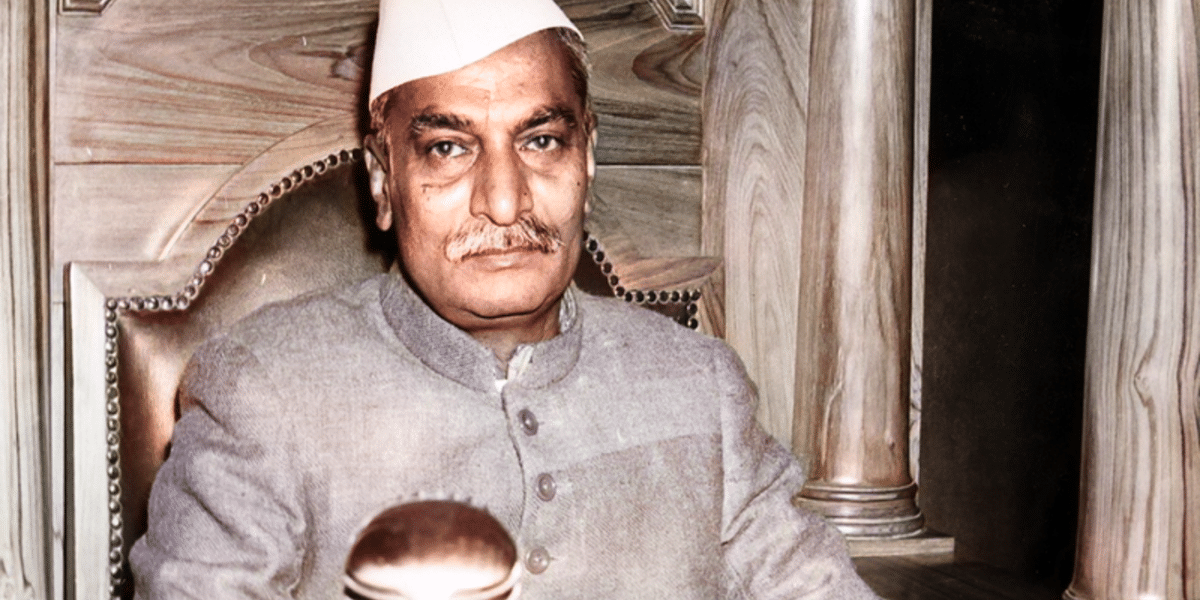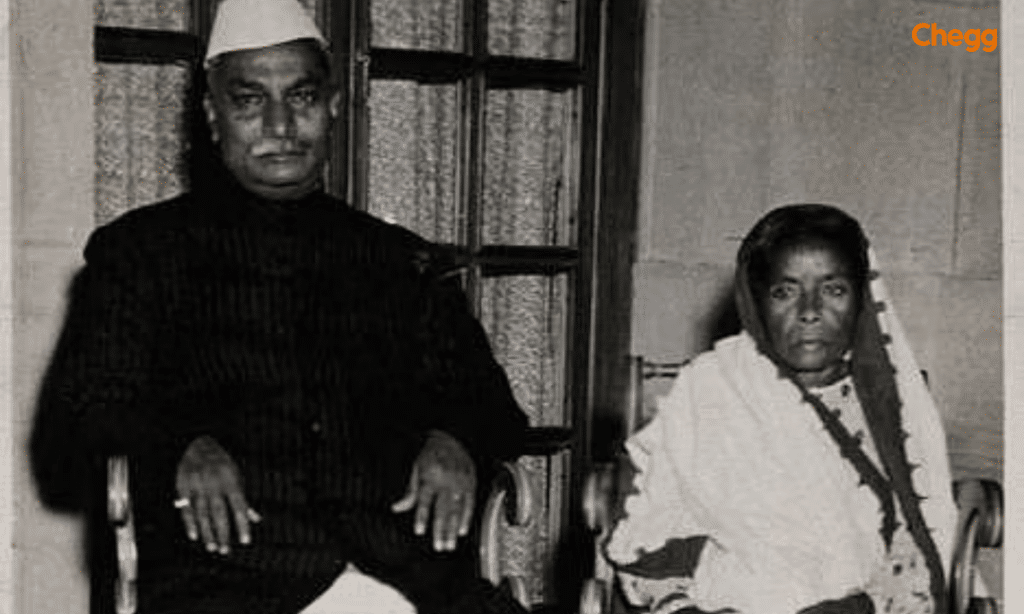
Quick Summary
Table of Contents
After India gained independence in 1947, Dr. Rajendra Prasad was elected as its first president. A scholar, journalist, lawyer, and politician, he actively participated in the Salt Satyagraha and Quit India Movement. In 1950, he was elected as the first president of the Constituent Assembly and served two terms, making him the longest-serving president at 12 years. Known for his integrity, neutrality, and dedication to India’s growth, Dr. Prasad’s leadership during socio-economic crises and his contributions to education continue to inspire future leaders.
Dr. Rajendra Prasad’s biography consists of early life history and childhood struggles to adulthood aspirations. The biography of Dr. Rajendra Prasad also discusses his involvement in public service. He has played an incredible role in India’s freedom struggle and post-independence history, Known for his simplicity and humility, Dr. Rajendra Prasad was deeply respected for his leadership during India’s formative years as a republic.
Dr. Rajendra Prasad was a prominent figure in Indian history, best known as the first President of India. Here are some key facts about his life and legacy:
1. First President of India
Dr. Rajendra Prasad was the first President of India, serving two terms from 1950 to 1962. He remains the only Indian president to have been elected unopposed.
2. Involvement in the Indian Freedom Movement
3. Role in Indian Independence
4. Contributions as President
5. A Scholar and Writer
6. Simple Lifestyle
7. Personal Tragedy
8. Awards and Recognition
9. Death
10. Legacy
Dr. Rajendra Prasad’s life continues to inspire generations, not just for his role in India’s independence but also for his role in shaping the post-independence nation with wisdom and vision.

Dr. Rajendra Prasad received education in multiple fields, starting with Persian, Hindi, and arithmetic at age five. He attended Chapra District School and TK Ghosh Academy, securing the top spot in the University of Calcutta entrance exam, and earning a monthly scholarship. He graduated from Presidency College in 1905, and in 1907, completed his M.A. in Economics. As a scholar, he applied his knowledge of history, politics, and economics in government work.
He began his career as a teacher, became principal of Langat Singh College, and later studied law at Ripon College, where he earned a gold medal. He practiced law in the Bihar and Orissa High Courts starting in 1916. Active in public service, he helped form the Bihari Students Conference in 1906 and assisted flood and earthquake victims. His commitment to education and social welfare remained a driving force throughout his life.
Dr. Rajendra Prasad played a significant role in India’s freedom struggle and post-independence era. He joined the Indian National Congress in 1911 and was imprisoned twice—during the Salt Satyagraha in 1931 and the Quit India Movement in 1942. He also opposed the Rowlatt Act and the Jallianwala Bagh massacre.
After independence, he was elected as India’s first President on January 26, 1950, and re-elected in 1952 and 1957. He contributed to key national policies, including the Hindu Code Bill. After retiring in 1962, he returned to Patna and spent his remaining years at the Bihar Vidyapeeth campus.
Dr. Rajendra Prasad has contributed significantly to Indian history and constituent assembly. He also won major awards and accomplished fame with his dedicated work.
His major accomplishments, awards, and roles
In 1962, they awarded him Bharat Ratna for his selfless service to the public and his role in Indian independence. He has also penned several books. Look at a few of them.

The journey of Dr. Rajendra Prasad has been incredible. That’s why Rajendra Prasad’s birthday is an important day to celebrate. The day is not only to celebrate his birth but also to celebrate his ideas.
Rajendra Prasad was born on December 3, 1884. The village name was Jiradei, located in the Siwan district of Bihar. He was a very popular leader across India. Other titles, such as Rajendra Babu and Desh Ratna, were also known by him. That’s why people celebrate Rajendra Prasad Jayanti every year on December 3. Bihar has declared Dr. Rajendra Prasad’s birthday as ‘Medha Diwas’.
The celebration of the life and legacy of Dr. Rajendra Prasad is a source of motivation for all political parties. This is ideal for honest political parties. He has created a base for the building of constitutional traditions in India. He has kept his personal life aside from his political life. There is an incident. On January 25, 1960, he received the news of the death of his elder sister. During his tenure as President, Dr. Rajendra Prasad played a key role in the establishment of many democratic institutions in the newly independent country. A controlled his emotions and attended the Republic Day function. The nation, along with the political parties, should admire and adopt his ideals.
“In realizing our ideals, our means must be as unsullied as the end!”
– Highlighting moral means to realize ends.
“We must be ever mindful that despite whatever religion or tongue, we are one people.”
– An appeal for oneness amidst diversity.
“The sanctity of law can be preserved only so long as it is the reflection of the will of the people.”
– Highlighting the democratic principle of law.
“My ambition is not to be the leader of a party but the leader of the people.”
– Expressing his selfless service to the country.
Every good time ultimately comes to an end. Future generations need to follow the legacy that Rajendra Prasad’s death has left. There were certain circumstances under which he died. But the mark is still visible that he has left behind him.
In 1962, Dr. Rajendra Prasad lost his beloved wife. His wife’s name was Rajvanshi Devi. This was one of the major reasons for the deterioration of his health. He lived in the Sadaqat Ashram of Patna in the last few days. Four months after the death of his wife, he passed away on February 28, 1963. Rajendra Prasad’s death was the end of his era. His final resting place is located at Mahaprayan Ghat in Patna. The Rajendra Smriti Sanghralaya established itself to preserve his artifacts and share life details with future generations. The Sangrahalaya is located in Patna.
Rajendra Prasad’s contributions will continue to inspire future generations. He was the living soul of humanity. He selflessly dedicates his life to the service of people. He has contributed to the framing of the Indian constitution. When India was facing the challenges of partition, he took responsibility for the nation as the first President of India. He teaches people to believe in ethical politics. Dr. Rajendra Prasad maintained a balance between his personal and professional life. His son also joined politics later on. Dr. Rajendra Prasad is a true mark of dedication, honesty, and impartiality.
Even decades after his passing, Dr. Rajendra Prasad continues to hold a place of deep respect in India’s democratic and historical narrative. As the first President of independent India, his legacy offers timeless lessons in ethical governance, national service, and unity in diversity — values that are still relevant in today’s socio-political environment.
In an era when the nation was just shaping its democratic identity, Dr. Prasad set an example by upholding the spirit of the Constitution rather than wielding power for personal or political gains. His tenure showed how the office of the President should function with integrity, neutrality, and constitutional discipline — a standard that continues to guide India’s leadership framework.
Despite holding the highest office in the country, Dr. Rajendra Prasad lived a humble life. He refused luxuries, lived modestly, and always prioritized public interest over personal comfort. In an age of increasing materialism, his simplicity remains a moral compass for leaders and citizens alike.
With increasing global discourse around ethical politics, inclusive governance, and educational reforms, Dr. Prasad’s ideals find renewed significance. His contributions to education, law, and social service continue to inspire young Indians to strive for excellence with humility and integrity.
For today’s generation, Dr. Rajendra Prasad exemplifies how deep knowledge, civic responsibility, and national pride can be combined to serve the country with honor. His life story is not just about political milestones but also about discipline, dedication, and nation-building.
In essence, Dr. Rajendra Prasad’s legacy is timeless. He serves as a beacon of what leadership rooted in character and purpose can achieve — a message more important than ever in the present-day India.
Dr. Rajendra Prasad’s contributions to India’s freedom struggle and nation-building remain unforgettable. His birthday is celebrated like a festival, honoring his enduring impact on the country. As India’s first President, he strengthened the nation’s global identity through his diplomatic skills, upheld Mahatma Gandhi’s ideals, and inspired generations through his leadership. Educated at prestigious institutions, he dedicated his life to India’s socio-economic progress. Even after his passing, his legacy continues to guide and motivate youth to work for the nation’s development.
Read More:-
Dr Rajendra Prasad served the nation two times. He became the only president to serve the nation for the longest time, that is, 12 years.
Dr Rajendra Prasad has actively participated in the Non-cooperation Movement, Salt Satyagraha, and Quit India Movement.
Dr. Rajendra Prasad was born in Siwan district of Bihar in a Kayastha family. His father’s name was Mahadev Sahai Srivastava. Kamleshwari Devi was his mother. He had one elder brother and 3 elder sisters. He got married at the early age of 12 in 1896.
Rajendra Prasad was born on December 3, 1884. The village was Jiradei, located in the Siwan district of Bihar. December 3 is celebrated as Dr Rajendra Prasad Jayanti every year.
In 1962, Dr. Rajendra Prasad lost his beloved wife. His wife’s name was Rajvanshi Devi. This was one of the major reasons for the deterioration of his health. Four months after the demise of his wife, he passed away on February 28, 1963.
Rajendra Prasad was jailed for participating in the Indian freedom movement, including the Salt Satyagraha and Quit India Movement against British rule.
Dr. Rajendra Prasad was the first President of India. He served from 1950 to 1962 and was the only president to be re-elected for a second term. He played a key role in India’s independence and constitution.
Dr. Rajendra Prasad is not widely associated with a specific, popular slogan like some other leaders. However, one of his well-known quotes reflects his values:
“In attaining our ideals, our means should be as pure as the end.”
This quote embodies his belief in ethical governance and integrity.
Dr. Rajendra Prasad is famous for being the first President of independent India and a prominent leader in the Indian freedom struggle. Known for his simplicity, integrity, and dedication, he played a key role in drafting the Constitution, promoting national unity, and guiding India’s socio-economic development in its formative years.

Authored by, Muskan Gupta
Content Curator
Muskan believes learning should feel like an adventure, not a chore. With years of experience in content creation and strategy, she specializes in educational topics, online earning opportunities, and general knowledge. She enjoys sharing her insights through blogs and articles that inform and inspire her readers. When she’s not writing, you’ll likely find her hopping between bookstores and bakeries, always in search of her next favorite read or treat.
Editor's Recommendations
Chegg India does not ask for money to offer any opportunity with the company. We request you to be vigilant before sharing your personal and financial information with any third party. Beware of fraudulent activities claiming affiliation with our company and promising monetary rewards or benefits. Chegg India shall not be responsible for any losses resulting from such activities.
Chegg India does not ask for money to offer any opportunity with the company. We request you to be vigilant before sharing your personal and financial information with any third party. Beware of fraudulent activities claiming affiliation with our company and promising monetary rewards or benefits. Chegg India shall not be responsible for any losses resulting from such activities.